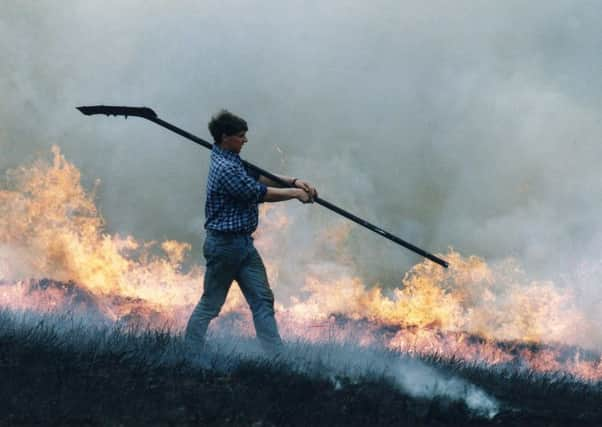Comment: Burning of heather is damage control


BEFORE working at the Game and Wildlife Conservation Trust (GWCT), I would not have known why, at certain times of year, there would be plumes of smoke snaking skywards from high on a far-off hillside.
Was it a group of extreme barbecue fanatics or maybe a Native American re-enactment society?
Advertisement
Hide AdAdvertisement
Hide AdApparently it was neither, as I swiftly learned along the steep learning curve of game and wildlife management.
What the smoke probably did indicate was the practice of muirburn – the traditional method of burning heath on a moor to encourage regeneration of the heather and thus provide a patchwork quilt of habitat, which is of huge ecological benefit.
Heather moorland is a semi-natural habitat and one of Scotland’s most iconic landscapes, which has been managed by man for hundreds of years.
Some 41 to 49 per cent of the UK uplands are dominated by heather moorland and blanket bog, which is of international importance due to rare plant communities, high arthropod diversity and 15 red-listed bird species of conservation concern that predominantly breed on heather moor. Controlled burning ensures that the fire moves steadily over the heath, burning the plant but leaving the peat bed relatively cool and the heather roots intact.
The burning process stimulates seeds lying in the ground to germinate providing new young plant shoots for wild birds and livestock.
Burning strips of heather creates a mosaic of heather habitat across the hill.
Having a range of different aged heather supports moorland birds, including grouse, by providing food in the form of succulent new shoots on which they feed and thicker older stands for nesting in.
Young heather is nutritionally superior to old heather, having more nitrogen, phosphorous and potassium. It helps prevent the replacement of heather by other vegetation types. Patches of different aged heather also attract sheep away from the fringes of heather moorland where overgrazing can occur.
Advertisement
Hide AdAdvertisement
Hide AdBurning, critically, can also provide fire breaks and reduce the risk of large scale wild fires. Recent research (Ward et al. 2013) shows that heather cover on peat soils is more favourable for carbon storage than grass cover – a strong reason for supporting balanced grazing and habitat management through an interest in grouse.
However, debate is heating up across the UK over the benefits of traditional muirburn, the season for which started on the first of this month and continues until the end of April.
Are we losing more than we are gaining by continuing with this ancient practice?
The challenge is to find ways of mitigating the impacts to allow the continuation of this activity.
GWCT understands the concerns about burning and grazing on active peat and it is an area in which more research is required, as there remains much contradictory evidence about the actual positive or negative impact of burning when longer timescales are taken into account.
The GWCT remains most keen to see enhanced carbon storage potential from wider upland habitats whilst simultaneously delivering wider ecosystem services such as refuges for waders and black grouse, and jobs in remote rural areas.
We will be working with other organisations to improve guidance available for land managers to promote best practice of rotational burning and hope to address, through research, some of the remaining concerns about the integration of carbon storage with contemporary land management objectives.
Engendering acceptance of the need for management change may be more easily achieved using targeted funding, research and advice aimed at significant existing problems.
Advertisement
Hide AdAdvertisement
Hide AdWe see opportunities for delivering a large proportion of many moorland services if burning is part of the management mix.
• Katrina Candy is head of PR and education at the Game & Wildlife Conservation Trust www.gwct.org.uk